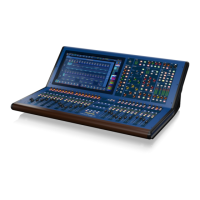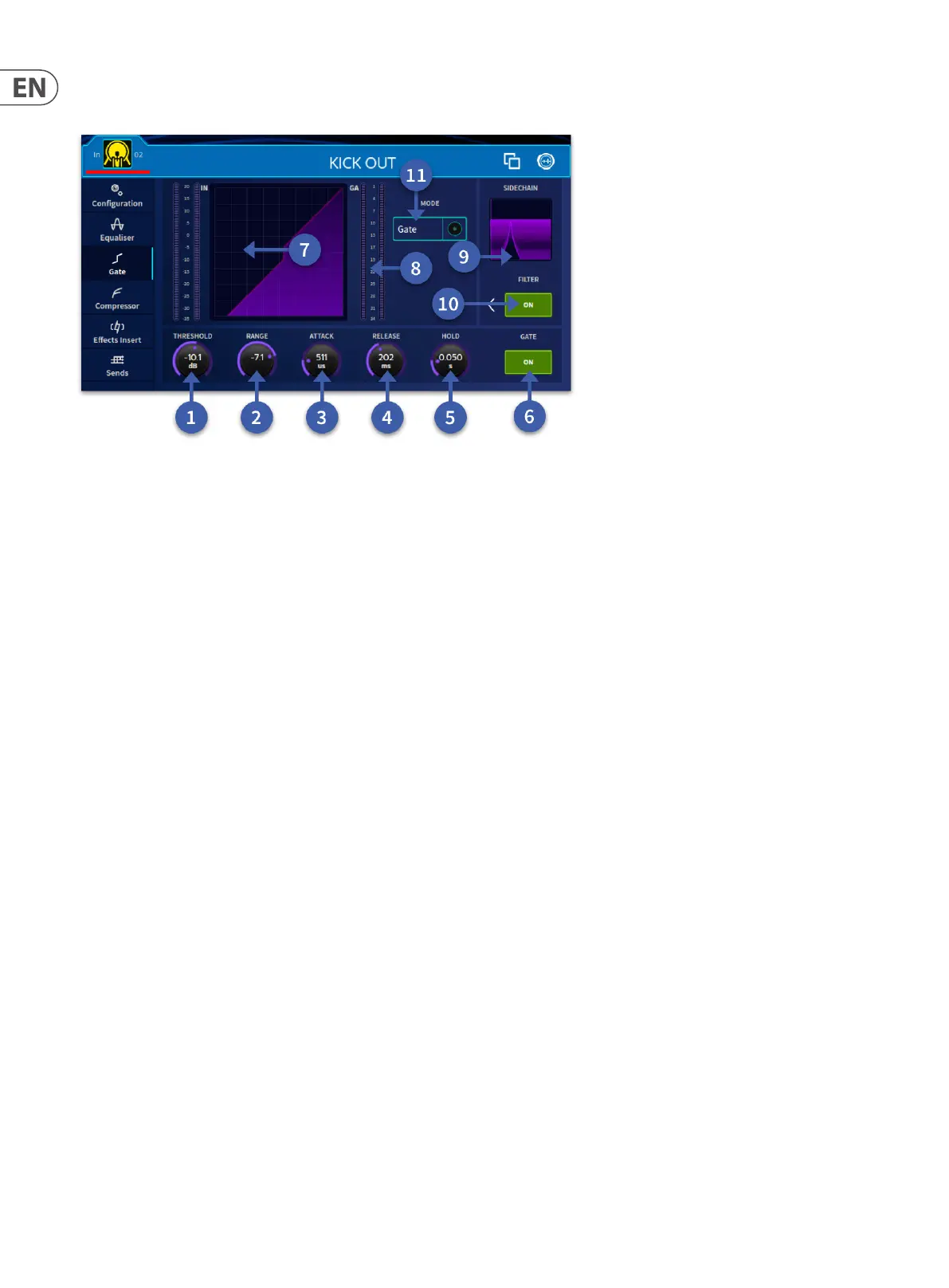264 HD96-24-CC-TP User Manual
Gate
While the dynamic section is addressing the gate, all of its controls are enabled except the Make Up control and KNEE buttons.
1. Threshold - Sets signal level at which gate opens. Range is from -50 dB to +25 dB.
2. Range - Control adjusts the amount of gain reduction applied to the signal below threshold. Controls the maximum gain reduction that is possible. Range is from
minus innity (-∞) to zero.
3. Attack - Adjusts time taken for gate to open after an over-threshold signal. Range is from 0.02 ms to 20 ms
4. Release - Adjusts time taken for gate to close after programme material falls back below threshold. Range is from 2 ms to 2.000 s.
5. Hold - Minimises chattering in conjunction with internal hysteresis. Once the signal drops below the threshold, this denes a waiting period before the gate
starts to close. Range is from -0.005s to 2.000s
6. On - Enables the gate in the signal path. When switched o, gate is bypassed.
7. Input level - Shows input into the gate.
8. Gain Reduction - Shows attenuation of signal in dB.
9. Sidechain Display - Shows the Sidechain frequency graphically.
10. Filter On/O - Enables the Sidechain lter into the signal path. Use arrow to expand Sidechain view.
11. Mode - Switch between Gate or Ducker
Ducker
In radio this can typically be achieved by lowering (ducking) the volume of a secondary audio track when the primary track starts and lifting the volume again when
the primary track is nished. A typical use of this eect in a daily radio production routine is for creating a voice-over.
Use of the sidechain allows the ducker on the channel you wish to be turned down to be triggered by the channel you wish to have priority.
Sidechain
The sidechain lter is a swept band pass type, which acts on the compressor and gate/ducker which covers the full audio spectrum. There are four lter Q widths
available, 0.1 Oct (tightest), 0.3 Oct , 1 Oct and 2 Oct (widest). This allows you to narrow the frequency response of the sidechain for more detailed control. The
sidechain graph shows the eects of the sidechain lter on the signal, selectable via the Width button.
Sidechain Listen button, allows the audio signal to be monitored via the solo bus for ne tuning the frequency selection.
Tip: For snare drum gating try setting the width at 0.3 Oct and the frequency around 2k. This can help cut out spill from other close drums and give a cleaner drum
sound. Snare bottom mics could also be triggered or keyed from the snare top mic to allow the gate to open faster and allow super quick transients through.

